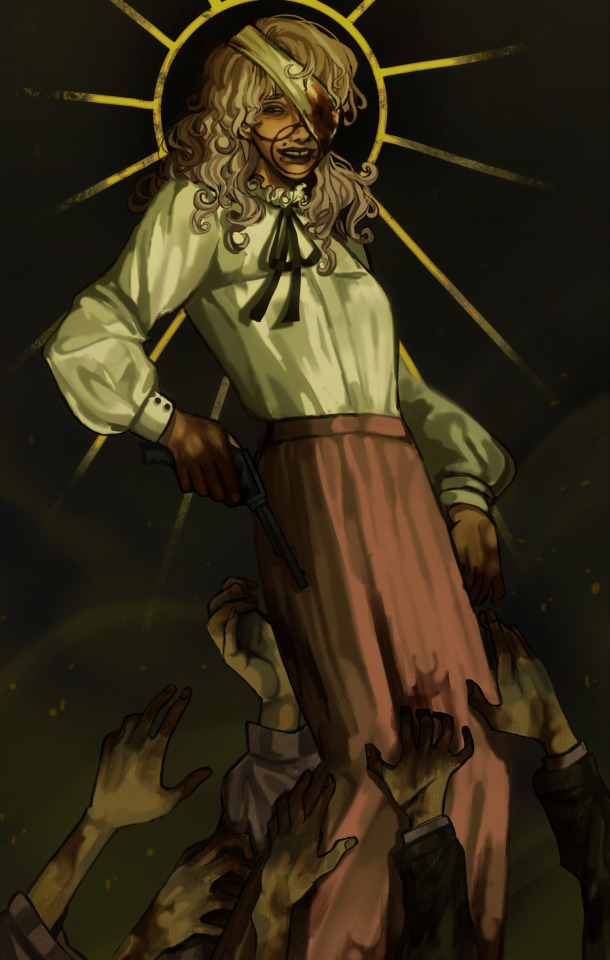Text
The Lighthouse (2019)
This film by Robert Eggers is surely one of the best I have seen so far.
The author himself hints at the counterparts of the two characters from Greek mythology:
Thomas representing Proteus, an early prophetic sea god.
Tommy representing Prometheus, the tytan who defied the Olympian gods by stealing the fire from them to bring it to the humans.
Thomas represents the unconscious mind, characterized by irrational believes and superstitions, while Tommy represents the conscious mind, which desires to "see" the Truth (i.e. the light) but is not ready to do so, and eventually succumbs to it for this very reason.
Tommy should in fact come to terms with his identity, not run away from the guilt that characterises much of his thinking and behaviour, he should stop trying to "mask" himself. Note that the frustration caused by the repression of his homosexuality even led him to kill a man in the past.
Tommy, much like Prometheus, goes against the laws of the gods represented by Thomas (do not kill seabirds as they contain the souls of the sailors) and his impatience makes him kill the alter ego of Proteus and look at the Truth even if not ready yet, causing his death.
The last shot shows Tommy punished just like Prometheus, with seabirds eating his viscera. The film also hints at all of this being a cycle that gets repeated forever, as happens in the myth.
These are just some notes I made on the film after watching it as well as after watching a great video analysis which I link below. There are actually a lot of themes developed and everyone should research them independently.
I included a picture showing a parallelism between a scene of the film and Sacha Schneider's painting Hypnosis (1904). Thomas can be seen as mentally stronger than Tommy and able to manipulate him, this is obvious since the unconscious mind is the one that "manipulated" behind the courtains the conscious one, the two characters are ultimately the same person and the film shows us a tragic battle between two parts that are present in every human being.
youtube
“Should pale death, with treble dread, Make the ocean caves our bed, God who hear’st the surges roll Deign to save our suppliant soul.” –Thomas Wake




3 notes
·
View notes
Text
Some southern gothic inspo.




5 notes
·
View notes
Text
Chapter IV - Wonders of Bilocation
The author explains that theologians and occult scholars of the 16th century—during the Age of Faith—were well-acquainted with the concepts of bilocation, bicorporeity, and aerial transportation, as referenced in the Bible. The idea of a person being in two places at once, though seemingly implausible, is addressed by the writer, who encourages readers to examine historical accounts before forming their own conclusions.
One such account comes from Dr. John Gilmary Shea, a highly respected American historian. Shea reports that during Father Benavides’ mission to New Mexico, he encountered a tribe that had not yet been reached by missionaries but was already well-instructed in Christian teachings. The tribe claimed that they had been taught by a woman, whose description matched that of the venerable Maria d'Agreda. Upon returning to Spain, Benavides visited Maria d'Agreda, who, although she had never physically traveled to the mission, was able to describe in detail the land and the missionaries' efforts.
The author suggests this is an example of bilocation and proposes it as an explanation for the legend that St. Thomas spread Christianity in the Americas without ever leaving Spain. According to some accounts, when missionaries arrived in the New World, the locals claimed they had already been taught by a "Fair God," whose appearance resembled St. Thomas.
Literature also claims that Maria d'Agreda entered a state of ecstasis during which, under miraculous influence, she was transported to the distant regions of the New Mexico mission. There, she preached to the locals in Spanish, and though they did not speak the language, they reportedly understood her perfectly.
Following this discussion of aerial transportation, the author delves into the phenomenon of bilocation, where a person appears to be in two places simultaneously. The reported interview between Benavides and Maria d'Agreda is recounted, where Maria was able to describe the topography of the region and name the tribes the missionaries had encountered. Maria explained that an angel took her form in these remote regions, while she, through the angel, was able to see and hear everything as if she were physically present. This concept of "angelic apparitions" is also documented numerous times in scripture.
---
This is a synthesis I made of the third chapter of the very interesting book “Essays in Occultism, Spiritism and Demonology”, by Dean W. R. Harris.
Honestly, the 3rd chapter was very interesting but this one feels really weird, the way in which the author seems to justify everything that is written in the Bible is quite ridicolous, however, it is after all a book to be placed in its own context.
0 notes
Text
Chapter III - The Sense of Orientation
The author argues that, much like animals that lose certain abilities after being domesticated, humans may also have lost a "sixth sense" due to inactivity. The writer references animals such as geese and moose, which seem capable of predicting the onset of cold weather, almost as if they possess a form of clairvoyance. The author questions what connects the actions of these animals with their unconscious behavior, wondering if this could be the so-called "sixth sense."
The author also references Dr. Von Hartmann's definition of "unconscious knowledge" and "second sight," phenomena that cannot be proven through a materialistic approach and are often overlooked for that reason. The sense of direction seen in many animals is discussed, and it is noted that "savages" still retain this ability, which they share with animals, while "civilized" humans have largely lost it due to lack of use.
The author provides numerous examples from literature in which shamans used their sixth sense, such as identifying the location of a group of explorers and sending members of their tribe to aid them.
It seems that each person has two minds:
A conscious mind, which interacts with the material world through the five senses, with reasoning as its highest function.
A subliminal mind, which perceives people and things independently of the five senses. This mind is intuitive, "sees without needing eyes," and can "transport" us to different locations (i.e., bilocation, which is discussed later in the book).
The abundance of historical examples of the sixth sense makes it difficult to deny its existence. To do so would imply that everyone was either deceived or attempting to deceive others. A more reasonable conclusion is that there is something "more" that we do not yet fully understand.
---
This is a synthesis I made of the third chapter of the very interesting book "Essays in Occultism, Spiritism and Demonology", by Dean W. R. Harris.
0 notes
Text



Today I watched the film Tomie: Unlimited (2011), the vibes do NOT pass the Junji-Ito vibecheck, however I am always a fun of J-Horror and nonsense and almost comical violence!
2 notes
·
View notes


